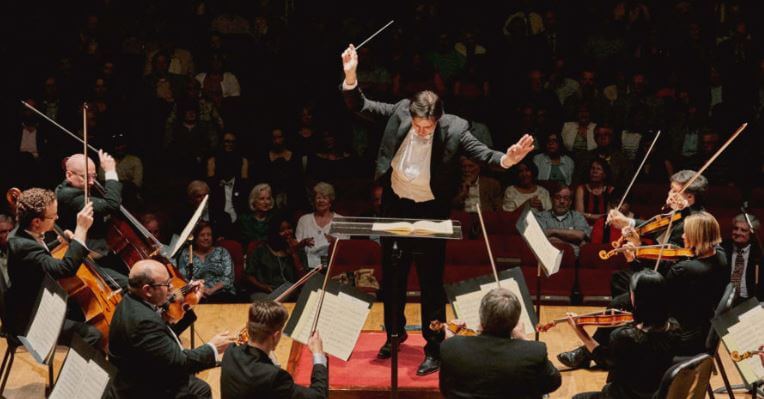A project team is a lot like an orchestra. The team is a group of people assembled with the purpose of delivering a final piece. This team is usually made up of sections, or groups of subject matter experts in areas specific to the project. Within each section is usually a principal who leads the members of that section.
Most orchestras have a conductor, who leads the sections through a performance. The conductor is expected not only to conduct the players, but also to prepare them for a successful performance. The conductor doesn’t play every instrument, nor are they expected to even know how. But they must be able to interpret the work, ultimately meeting or exceeding the audiences’ expectations.
A project has a Project Manager, who is essentially the conductor of the project team. The Project Manager unifies the team. They set the tempo. They work with individual team members and sections to interpret the work being performed. They manage each stakeholder’s expectations.
MANAGING STAKEHOLDERS
An orchestra’s stakeholders are not limited to the audience. Stakeholders might include the Executive or Artistic Director, the board, patrons or donors, volunteers, or the community-at-large. Each of these stakeholder groups may have a different set of expectations. While the patrons may want varied excellent performances, the board may want to sell out each performance. Some donors may insist performances be made available to local schools.
Stakeholders on a project can come in many forms: executive leaders, gift officers, development operations staff, vendors, or even the donor-base. Every stakeholder or stakeholder group needs a management strategy. Each has its own set of requirements and expectations. A great Project Manager understands how to elicit and document requirements, and develop strategies to cater to each stakeholder’s impact and influence on the project.
MANAGING THE PROJECT TEAM
Rarely can a conductor perform on each instrument of an orchestra. The conductor should understand the characteristics and limitations of an instrument, but they rely on each member of the orchestra to perform their respective instrument. The conductor can’t instruct each musician what note to play. Instead, the musicians use the sheet music along with their own instincts and training, in time with the conductor’s gestures, to perform in harmony.
Like an orchestra’s sections, a typical project’s schedule is made up of overlapping phases. These project phases consist of the work that has to be done by many people over time to deliver the end result. The Project Manager needs to be the expert in project management, while the project team needs to be the technical experts in the tasks required to get the project work done. The Project Manager’s job should not be to manage every individual task. The most effective way to manage a project is to allow the people doing the work to manage the tasks that make up the work. The Project Manager’s role should be to trust and verify. They believe in the team doing the work and audit their deliverables.
COMMUNICATING DURING A PROJECT
A conductor uses hand gestures or other signals, like making eye contact with certain musicians, during a performance. They also communicate verbally during rehearsals. Much like an orchestra conductor communicating with its orchestra, the Project Manager must use the various communications available.
A typical Project Manager can spend roughly 75-90% of their time on a project communicating, according to PMI’s Guide to the Project Management Body of Knowledge. Ninety percent. While some conversations happen on the fly, a great Project Manager plans effective communications. They define roles and responsibilities clearly for every member of the team and ensure they’re informed at every step of the project.
The Project Manager must consider how communications are happening, what the purpose of each communication is, and what factors could affect the success of the communication. Sending regular “project update” emails or presenting in front of the company in an all-staff meeting can’t be the only methods of communication. The Project Manager uses interactive, push, and pull methods to communicate their message effectively. Communications can be formal or informal, written or verbal. The Project Manager should consider how information will be sent, received, and interpreted between all parties.
ENSURING THE BEST PERFORMANCE
Whether your project team is as big as a symphony or smaller than a chamber ensemble, conducting the orchestra and meeting the audiences’ expectations is accomplished through communication.
At JCA, we manage projects of every size and complexity. We know that communication is key to your project’s success. Our methodologies ensure consistent, high-quality outcomes so all of your stakeholders are satisfied with a job well done.


